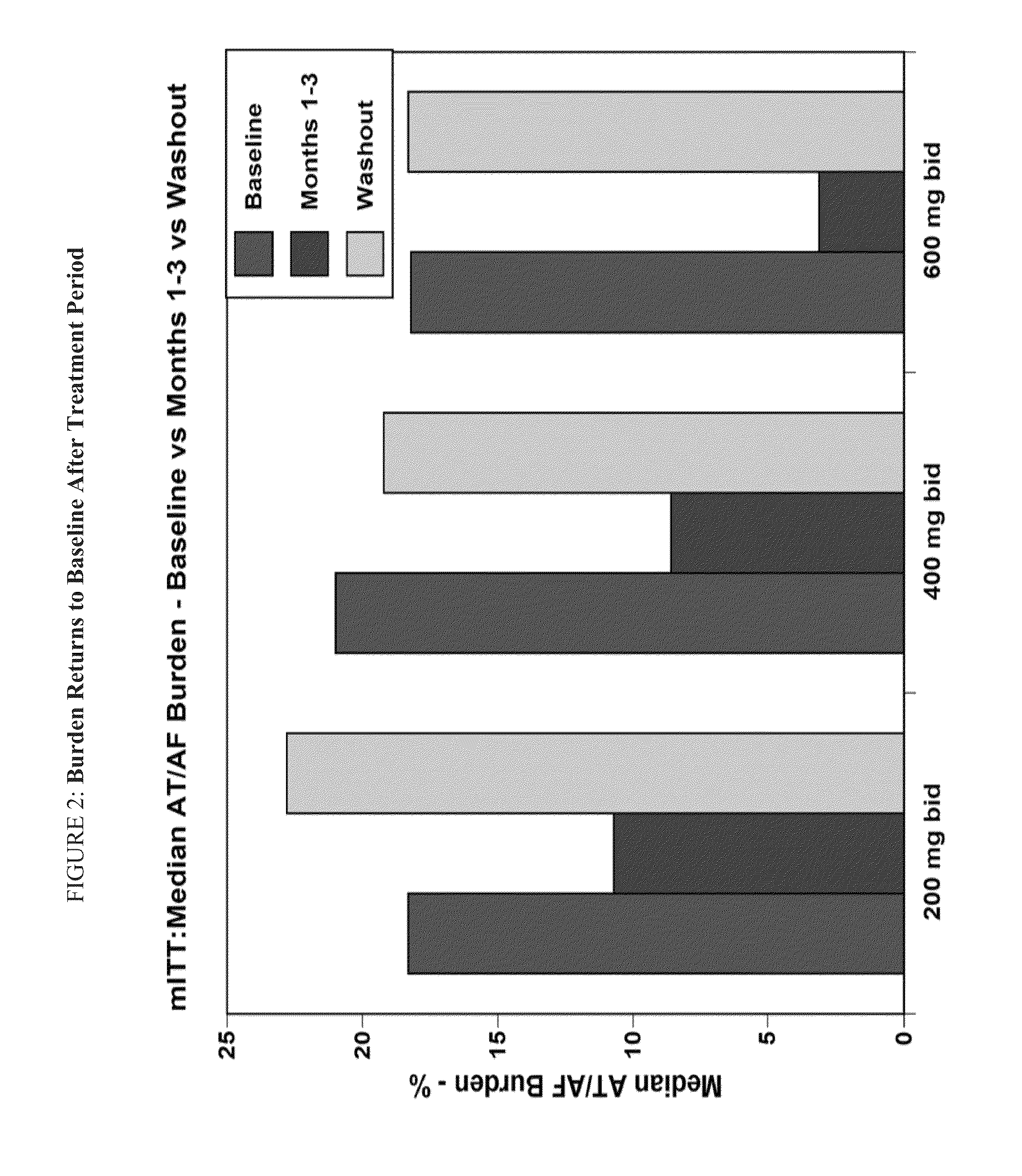Methods for treating atrial fibrillation
- Summary
- Abstract
- Description
- Claims
- Application Information
AI Technical Summary
Benefits of technology
Problems solved by technology
Method used
Image
Examples
example 1
Budiodarone (ATI-2042) and AF
[1545]The primary objective of the study was to assess the efficacy of budiodarone, (S)-sec-butyl 2-(3-(4-(2-(diethylamino)ethoxy)-3,5-diiodobenzoyl)benzofuran-2-yl)acetate, in treating AF, as measured by a reduction in AF burden (AFB) in subjects with paroxysmal atrial fibrillation who had implanted pacemakers (Arya A, et al., Europace. 2009 April; 11(4):458-64. Epub 2009 Jan. 26).
[1546]This study was a proof of concept design seeking preliminary information on the pharmacodynamic effects, safety, and tolerability of the investigational drug ATI-2042 at a variety of doses, in patients with PAF. Patients with advanced DDDRP pacemakers were selected because of the pacemaker's sophisticated diagnostics and the ability to record continuously and log asymptomatic as well as symptomatic episodes.
[1547]The molecular structure of budiodarone is identical to that of amiodarone, except for the presence of a sec-butyl acetate side chain at position 2 of the benzof...
example 2
Budiodarone (ATI-2042) and AF, Round 2
[1583]The objective of the study is to determine the efficacy of budiodarone in reducing atrial tachyarrhythmia (AT / AF) burden in patients with paroxysmal atrial fibrillation (PAF) compared to placebo, for 12 weeks of treatment, and the safety and tolerability of budiodarone for up to 12 weeks of treatment.
[1584]Secondary: to study the effect of budiodarone versus placebo on the number and duration of AT / AF episodes, duration of normal sinus rhythm (NSR) between episodes of AT / AF and on symptoms associated with PAF.
[1585]Example 2 describes a multicenter, multinational, randomized, double-blind, placebo-controlled, parallel-group study of the efficacy and safety of budiodarone in patients with PAF. Planned enrollment was up to 140 patients (with eventually 110 enrolled) with proven PAF who had permanently implanted pacemakers with appropriate AT / AF diagnostic and recording capabilities. Potential study participants underwent screening assessment...
PUM
| Property | Measurement | Unit |
|---|---|---|
| Fraction | aaaaa | aaaaa |
| Time | aaaaa | aaaaa |
| Time | aaaaa | aaaaa |
Abstract
Description
Claims
Application Information
 Login to View More
Login to View More - R&D
- Intellectual Property
- Life Sciences
- Materials
- Tech Scout
- Unparalleled Data Quality
- Higher Quality Content
- 60% Fewer Hallucinations
Browse by: Latest US Patents, China's latest patents, Technical Efficacy Thesaurus, Application Domain, Technology Topic, Popular Technical Reports.
© 2025 PatSnap. All rights reserved.Legal|Privacy policy|Modern Slavery Act Transparency Statement|Sitemap|About US| Contact US: help@patsnap.com



